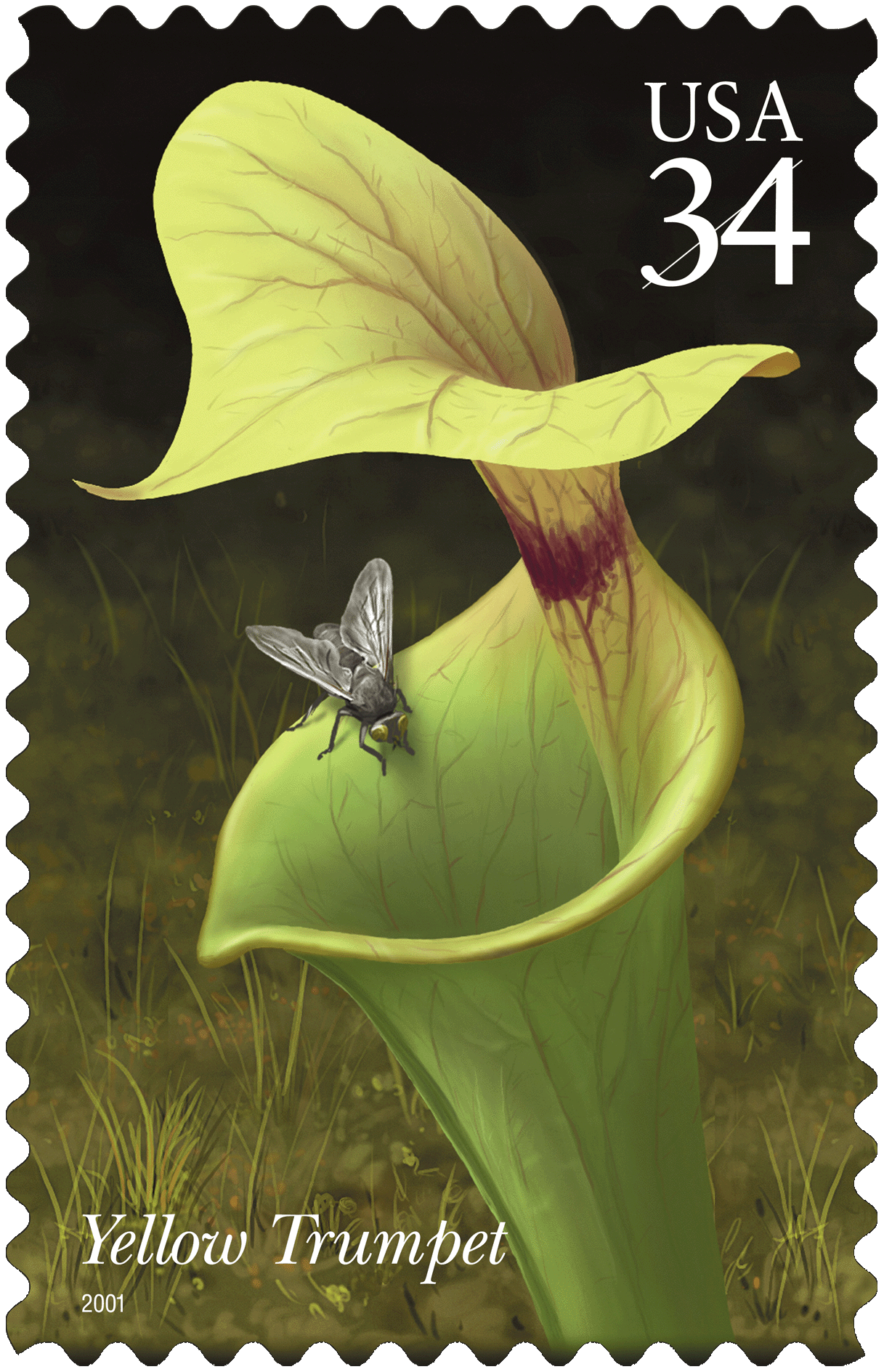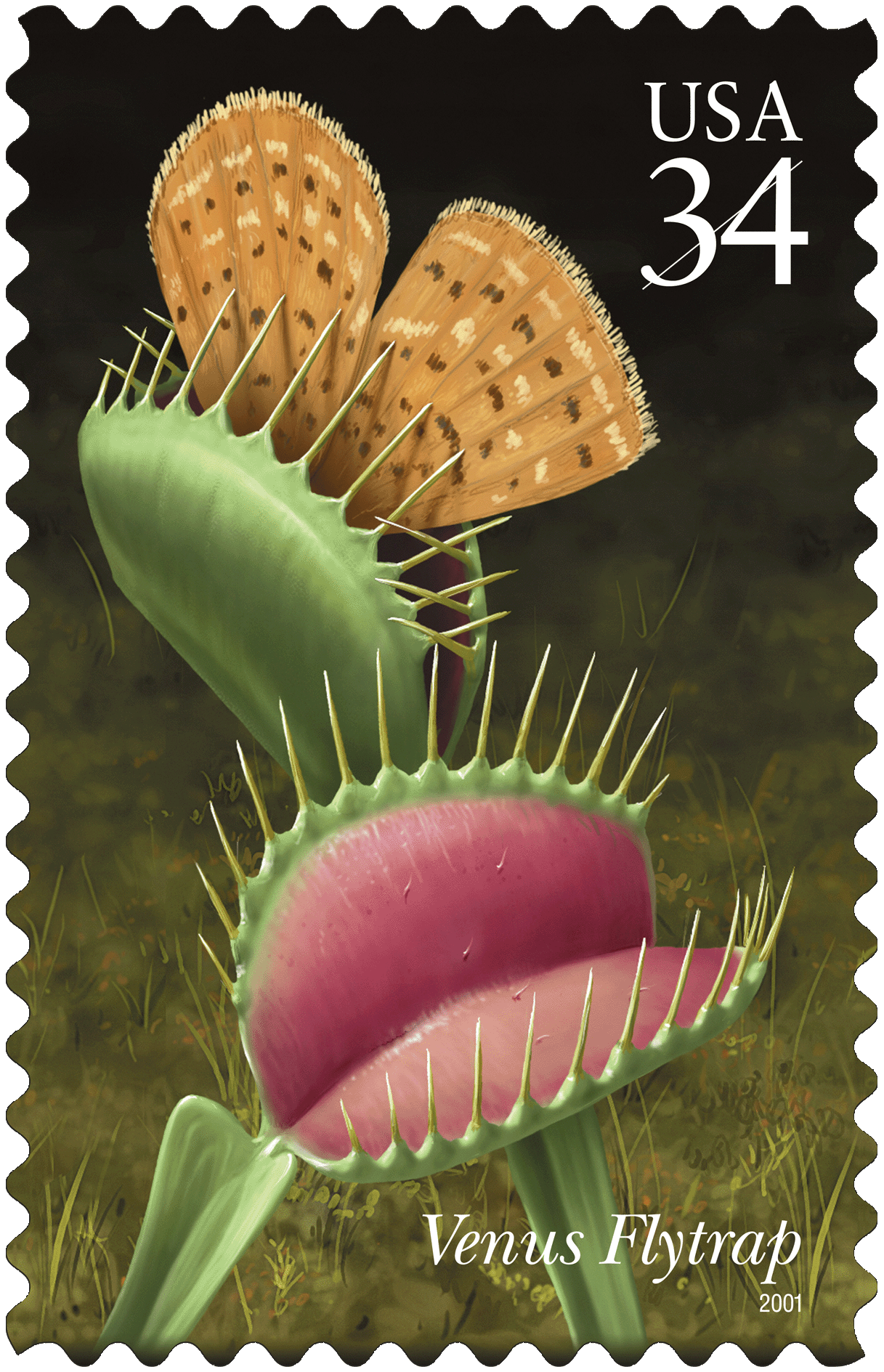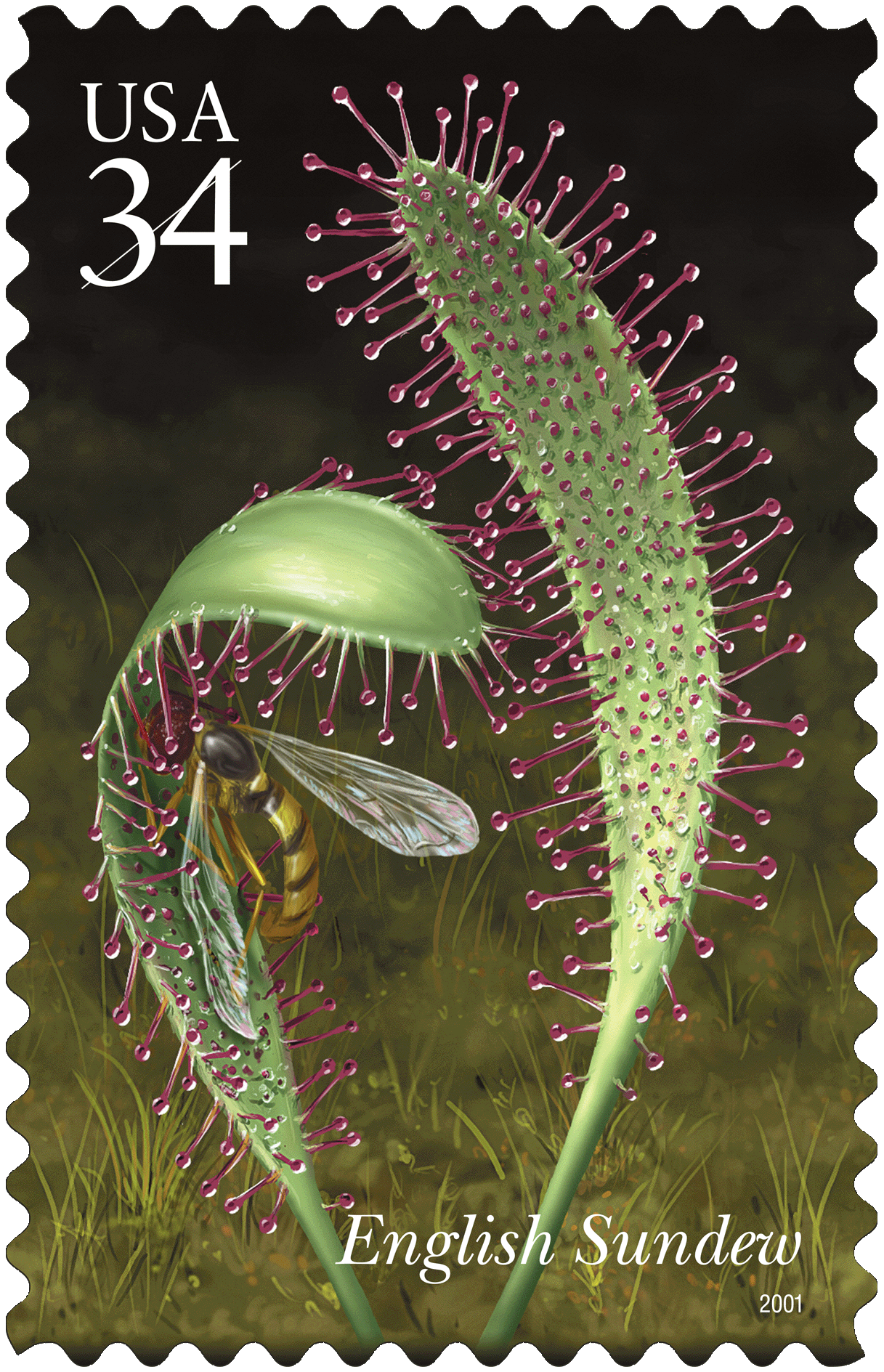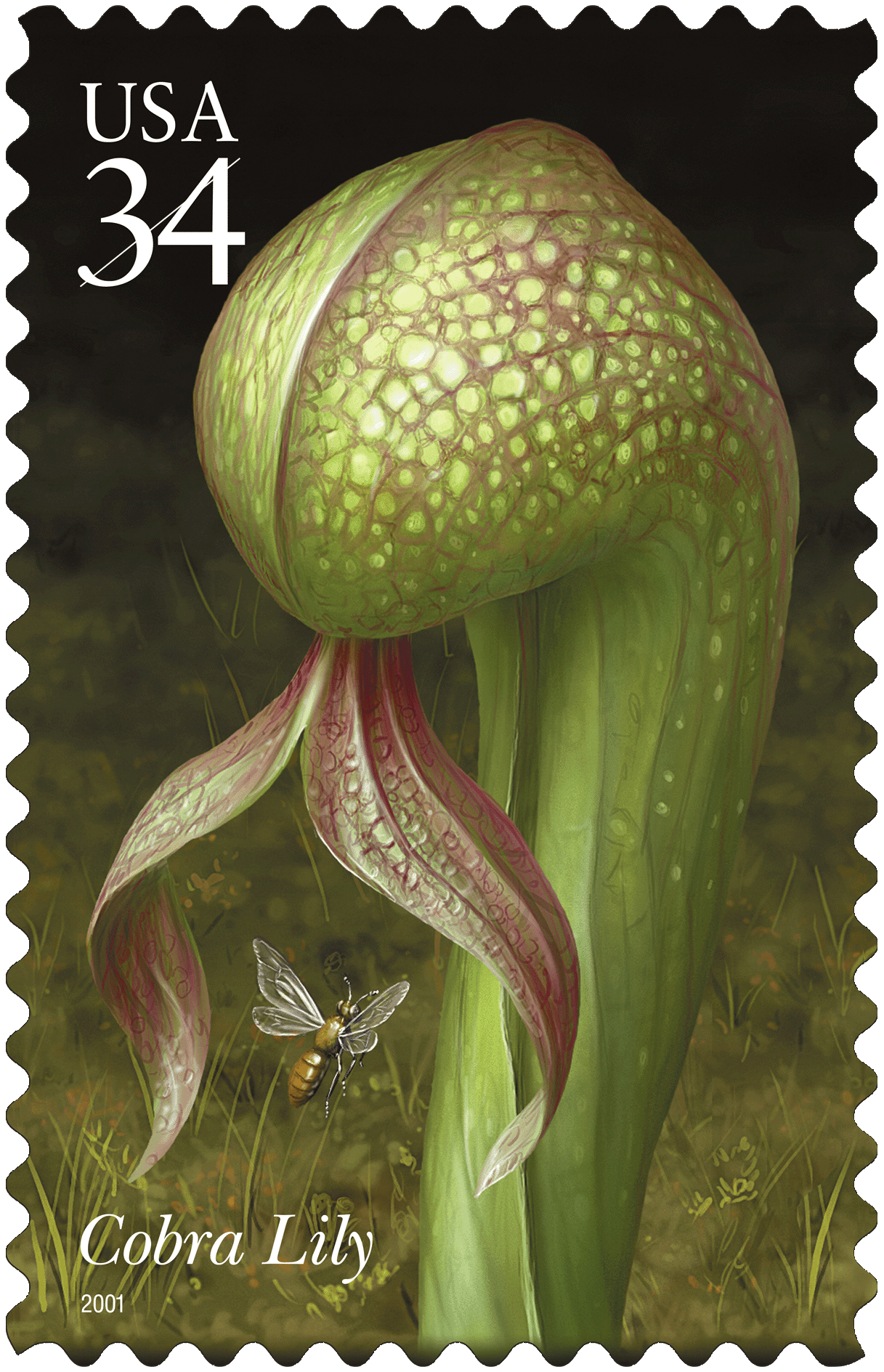About This Stamp
Four carnivorous plant species and their prey are portrayed on this striking pane of 20 commemorative stamps. All plants on the pane are native to — but not necessarily restricted to — North America.
The Venus flytrap (Dionaea muscipula) is shown with a little metalmark — a kind of butterfly — caught in one of its leaves. These small plants have traps ranging from one to two inches long. From Myrtle Beach, South Carolina, to central North Carolina, the Venus flytrap is found in moist, sandy areas near the coast.
A fly perches on the lip of the yellow trumpet (Sarracenia flava), also known as the trumpet or yellow pitcherplant. If the fly enters the tube of the plant, the yellow trumpet’s stiff, downward-pointing hairs help prevent the insect from escaping. Once caught in the trap, the insect drowns in, and is digested by, a pool of water and enzymes in the bottom of the plant. Found in the southeastern United States, mature yellow trumpets grow to be 30-35 inches — and occasionally up to 48 inches — tall.
An unwary wasp is drawn toward the mouth of the cobra lily (Darlingtonia californica), a plant native to the West Coast. Sometimes called California pitcher plant or cobra plant, the cobra lily’s colorations and fragrant nectar lure insects into its tubular leaves. Once inside, insects are prevented from escaping by a collar around the entrance.
The English sundew (Drosera anglica) is a small plant that uses its sticky leaves to trap insects. Here an unlucky syrphid fly has been caught by the plant. English sundews are found in mossy bogs across the northern latitudes of the United States and along the West Coast as far south as California.
Stamp Art Director

Phil Jordan
Phil Jordan grew up in New Bern, North Carolina, and attended East Carolina University. After Army service in Alaska, he graduated from Virginia Commonwealth University with a degree in visual communications. He worked in advertising and in design at a trade association before joining Beveridge and Associates, Inc., where he provided art direction for corporate, institutional, and government design projects. A partner in the firm, he left after 18 years to establish his own design firm where he managed projects for USAir, NASA, McGraw-Hill, IBM, and Smithsonian Books, among others. He was Design Director of Air & Space/Smithsonian magazine for 15 years. His work appeared in numerous exhibitions and publications such as Graphis and Communications Arts. A past president of the Art Directors Club of Metropolitan Washington, he was an art director for the U.S. Postal Service from 1991 to 2014. A resident of Falls Church, Virginia, he is a retired glider pilot and a member of the Skyline Soaring Club.
Stamp Artist

Steve Buchanan
Steve Buchanan was trained as a classical musician at Oberlin College in Ohio and earned his doctorate from the University of Texas in Austin. After eleven years as a university professor and concert pianist, he studied painting with Dennis Nolan at the Hartford Art School and, in 1988, began a successful second career as a freelance illustrator.
Buchanan specializes in natural science illustration and is best known for his botanical and entomological subjects. His clients have included Bayer Corporation, The United Stated Forest Service, The American Arachnological Society, The New York Times, The Brooklyn Botanic Garden, Scientific American, Houghton Mifflin, and Fine Gardening Magazine.
Among Buchanan’s projects for the U.S. Postal Service® are Tropical Flowers and the Insects & Spiders Classic Collection, both issued in 1999; Reptiles & Amphibians (2003); American Motorcycles (2006); La Florida (2013); and Winter Berries (2019).



